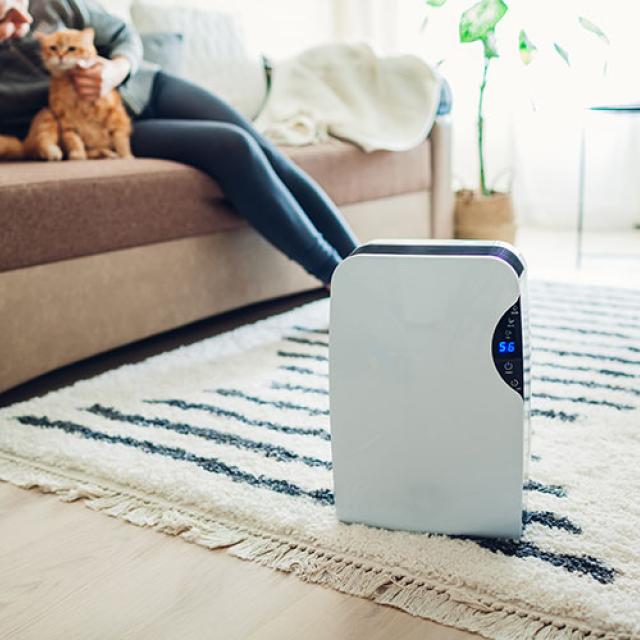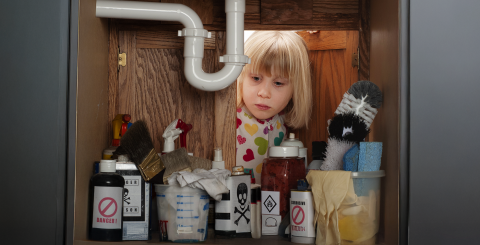Air exchangers and humidity: everything you need to know to avoid mold in your home!

Humidity is the dreaded enemy of any home, especially in rooms where its level is higher, such as in the basement. In addition to causing structural damage, it has been proven that it can significantly threaten occupants' health. Fortunately, there are effective ways to reduce associated risks.
Do you want to protect your home against the harmful effects of humidity in order to preserve its structure and your family's health? Proper maintenance of your property as well as the installation of humidity management systems, such as an air exchanger, can make a big difference. Find everything you need to know about humidity management in your home here.
Why is it important to prevent excessive humidity in your home?
Most home insurance policies do not cover damage caused by humidity or mold, as these are often considered gradual damage that can be avoided with proper maintenance of one's property. High humidity can lead to structural problems, including deterioration of wood and drywall, as well as paint damage. By taking steps to control humidity, you can preserve the longevity of your home, while avoiding potentially high repair costs.
What is an air exchanger?
An air exchanger is a device that ensures the proper ventilation of a property by replacing the indoor air with outside air. It reduces pollutant and humidity levels while preventing air stagnation. By replacing the stale air in the house with filtered air from the outside, it ensures better indoor air quality, while preventing the accumulation of humidity. Air exchangers are now mandatory for new constructions in the province of Québec, making sure they are very well insulated.
Air exchangers and dehumidifiers: what's the difference?
Many people confuse air exchangers with dehumidifiers. While air exchangers allow your home to be ventilated by replacing the humid indoor air with air from outside, dehumidifiers remove excess humidity directly from the ambient air. In a basement, where humidity is often more concentrated, it may be necessary to install a dehumidifier in addition to an air exchanger to keep the air healthy and dry throughout the house.
5 best practices for managing humidity in your home
If humidity is not properly managed, it can create an environment conducive to mold in the house. That's why healthy habits are in order. Here are a few tips that will help you prevent the risks associated with humidity.
- Get the right humidity management tools
First, consider installing an air exchanger in your home. It not only reduces the ambient humidity level, but also removes stale air by replacing it with filtered outdoor air. Equipping your home with such a device is therefore an effective solution to prevent the appearance of mold. Furthermore, to keep an eye on the humidity level in your property, get a hygrometer, and don't hesitate to install a dehumidifier in rooms prone to humidity build-up.
- Use a dehumidifier in the basement
Humidity tends to be higher in basements. As a result, the use of a dehumidifier is strongly recommended to prevent excess humidity and, hence, the appearance of mold. By keeping the humidity level in the basement below 50%, you will significantly reduce the risk of mold growth. Remember to empty and clean the dehumidifier tray regularly.
- Be on the lookout for signs of water seepage
Another key step in managing humidity in your property is to make sure your home is airtight. Water seepage, especially in the basement, can increase humidity levels and create an environment conducive to mold. Consequently, it is essential to regularly inspect the foundations and exterior walls of your home to detect cracks or other infiltration points.
- Ensure adequate ventilation in washrooms and kitchens
Washrooms and kitchens are particularly prone to humidity, due to the water vapor generated by showers and cooking. Make sure these rooms have adequate ventilation to remove steam. To do this, turn on the exhaust fan or hood and open a window when possible, during and after using these spaces.
- Keep your home clean
To begin its life cycle, mold needs three essential elements: spores (found in the air), organic food (such as dust) and humidity. By cleaning surfaces and vacuuming frequently, you can remove spores and dust from your home, thereby preventing mold from forming.
Using an air exchanger in your home: a few precautions to take
While air exchangers are a great ally in managing humidity in your home, they do present some risks and need to be inspected periodically. Indeed, a poorly maintained air exchanger can lose efficiency and also become a source of fire when certain defective parts are not detected.
Consequently, in addition to frequently maintaining your system, including cleaning filters every three months and checking ducts every three to five years, be aware of product recalls. Some air exchanger units may be subject to recalls for safety reasons; make sure that yours is not one of them.
Presence of mold: what to do?
Are you noticing stains on the walls, ceilings and carpets in your home? Is a characteristic musty or earthy smell noticeable in a room? If such is the case, it's highly likely that you're dealing with a mold problem, and it's important to address the situation quickly. In addition to thoroughly cleaning and drying affected surfaces, make sure to find the source of the problem (e.g., too high humidity, water seepage, standing water, etc.). If the affected surfaces are large, numerous, difficult to clean or if mold reappears after cleaning, call a company specializing in humidity problems that holds a license from the Régie du bâtiment du Québec. To learn more about how to detect and remove mold in your home, please see the tips provided by the Government of Québec.
Protect your roof with good home insurance!
Damage caused by a gradual build-up of mold is generally excluded from home insurance policies. In other words, if mold gradually sets in due to an untreated humidity problem, it's unlikely that your insurance will cover the necessary repairs that will ensue. That's why it's essential to understand what causes humidity to build up and take preventative measures to avoid costly damage.
For more tips on humidity management and other topics related to protecting your home, visit our blog.
To learn more about home insurance, contact a Promutuel damage insurance representative right now or get an online quote from Promutuel Insurance in just four minutes!



